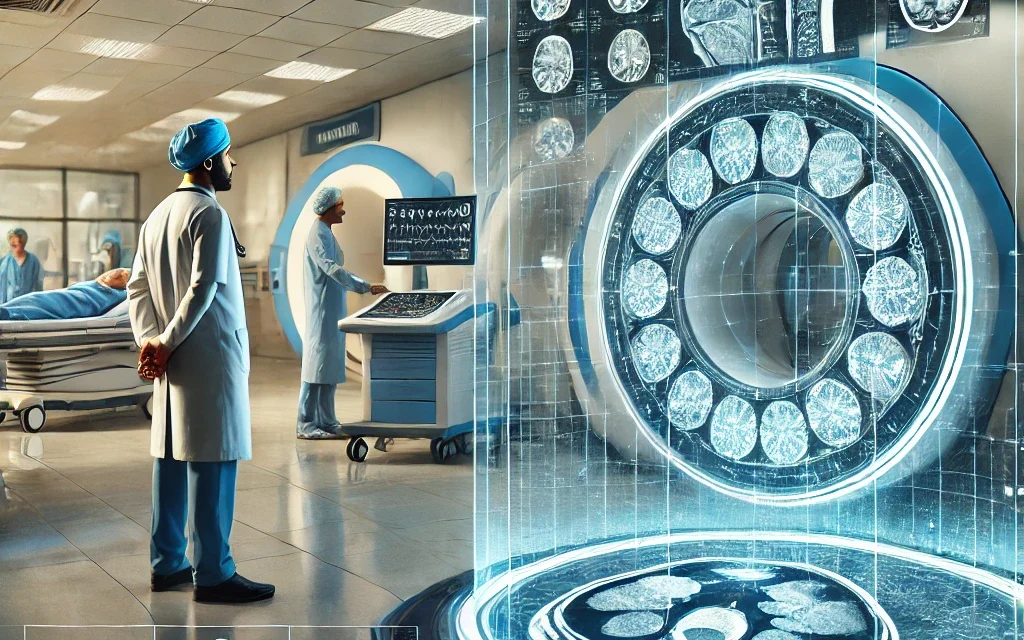
Next-Gen Medical Imaging Devices Revolutionizing Indian Hospitals

India’s healthcare sector is experiencing a significant transformation with the integration of next-generation medical imaging devices, enhancing diagnostic accuracy and patient care across the country.
Key Innovations in Medical Imaging:
- Voxelgrids’ MRI Scanners:
- Affordable MRI Technology: Voxelgrids, a Bengaluru-based company, has developed advanced MRI scanners aimed at making diagnostic imaging more accessible and affordable, targeting the vast population lacking access to such technologies.
- Affordable MRI Technology: Voxelgrids, a Bengaluru-based company, has developed advanced MRI scanners aimed at making diagnostic imaging more accessible and affordable, targeting the vast population lacking access to such technologies.
- Wipro GE Healthcare’s ‘Revolution Aspire’ CT System:
- Indigenous CT Imaging: Designed and manufactured entirely in India, the Revolution Aspire CT system enhances clinical confidence in diagnosing diseases and anomalies, aligning with the ‘Atmanirbhar Bharat’ initiative to strengthen domestic healthcare infrastructure.
- Indigenous CT Imaging: Designed and manufactured entirely in India, the Revolution Aspire CT system enhances clinical confidence in diagnosing diseases and anomalies, aligning with the ‘Atmanirbhar Bharat’ initiative to strengthen domestic healthcare infrastructure.
- Panacea Medical Technologies’ Radiotherapy Equipment:
- Advanced Cancer Treatment: Panacea has developed equipment like the BHABHATRON-II Telecobalt Unit and the SIDDHARTH-II Linear Accelerator, providing cost-effective radiotherapy solutions and expanding access to cancer treatment in India and other countries.
- Advanced Cancer Treatment: Panacea has developed equipment like the BHABHATRON-II Telecobalt Unit and the SIDDHARTH-II Linear Accelerator, providing cost-effective radiotherapy solutions and expanding access to cancer treatment in India and other countries.
- Philips’ AI-Enabled MRI Systems:
- Artificial Intelligence Integration: Philips is set to unveil its next-generation AI-enabled MRI system, the BlueSeal 1.5T, which aims to enhance imaging efficiency and diagnostic precision, reflecting the growing trend of AI integration in medical imaging.
Impact on Indian Healthcare:
- Enhanced Diagnostic Accuracy: The adoption of advanced imaging technologies enables earlier and more precise detection of medical conditions, leading to improved patient outcomes.
- Increased Accessibility: Indigenously developed and affordable imaging devices are expanding access to quality diagnostics, particularly in rural and underserved areas.
- Economic Growth: The development and manufacturing of medical imaging devices domestically contribute to economic growth and align with national initiatives like ‘Make in India.’
Challenges and Considerations:
- Infrastructure Development: Ensuring that healthcare facilities are equipped to utilize advanced imaging technologies effectively remains a challenge, particularly in rural regions.
- Training and Expertise: Continuous training for healthcare professionals is essential to maximize the benefits of new imaging technologies and maintain high standards of patient care.




























